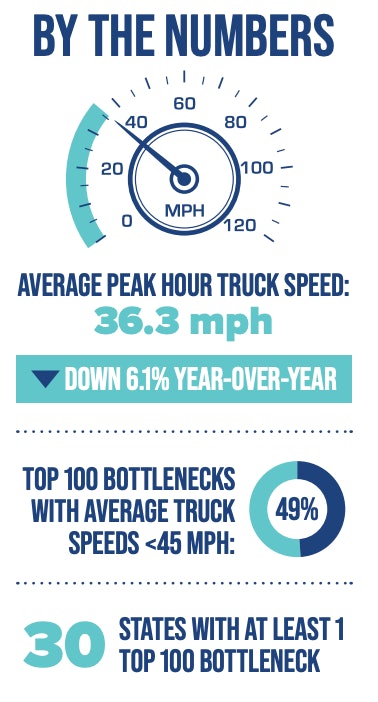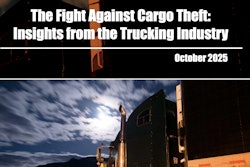
Crossing the George Washington Bridge from New Jersey into New York City remains the most congested bottleneck for truck traffic in the U.S.
This is the fifth year in a row that the passage from I-95 at State Route 4 in Fort Lee, New Jersey has held the top spot in the American Transportation Research Institute's annual listing. ATRI today released its 2023 Top Truck Bottleneck List, which measures the level of truck-involved congestion at over 300 locations on the national highway system.
The entire top 10 includes:
- Fort Lee, New Jersey: I-95 at SR 4
- Chicago: I-294 at I-290/I-88
- Houston: I-45 at I-69/US 59
- Atlanta: I-285 at I-85 (North)
- Atlanta: I-20 at I-285 (West)
- Chicago: I-290 at I-90/I-94
- Los Angeles: SR 60 at SR 57
- Los Angeles: I-710 at I-105
- Nashville: I-24/I-40 at I-440 (East)
- San Bernardino, California: I-10 at I-15

- Fort Lee: I-95 and SR 4
- Cincinnati: I-71 at I-75
- Houston: I-45 at I-69/US 59
- Atlanta: I-285 at I-85 (North)
- Atlanta: I-20 at I-285 (West)
- Chicago: I-290 at I-90/I-94
- Los Angeles: SR 60 at SR 57
- Dallas: I-45 at I-30
- San Bernardino, California: I-10 at I-15
- Chattanooga, Tennessee: I-75 at I-24
Texas leads all other states with the most congested bottlenecks with 13. The other top states on the list of multiple bottlenecks include:
- Georgia, nine
- California, eight
- Tennessee, seven
- Connecticut, New York, and Washington, six each
- Illinois, five
FROM THE TRUCKERS NEWS PODCAST: Here's how ATRI identifies the worst freight bottlenecks in the U.S.
ATRI said its analysis, which utilized data from 2022, found traffic conditions continue to deteriorate from recent years as more Americans returned to work post-pandemic. Consequently, supply chain bottlenecks occurred throughout the country. Average rush hour truck speeds were 36.3 MPH, down more than 6% from the previous year. Among the top 10 locations, average rush-hour truck speeds were less than 30 MPH.
ATRI's annual analysis, based on an extensive database of freight truck GPS data, uses several customized software applications and analysis methods, along with terabytes of data from trucking operations to produce a congestion impact ranking for each location. ATRI said its truck GPS data is also used to support numerous state and federal freight mobility initiatives.
The bottleneck locations detailed in this latest ATRI list represent the top 100 congested locations, although ATRI continuously monitors more than 300 freight-critical locations.
For access to the full report, including detailed information on each of the 100 top congested locations, visit ATRI's website.








